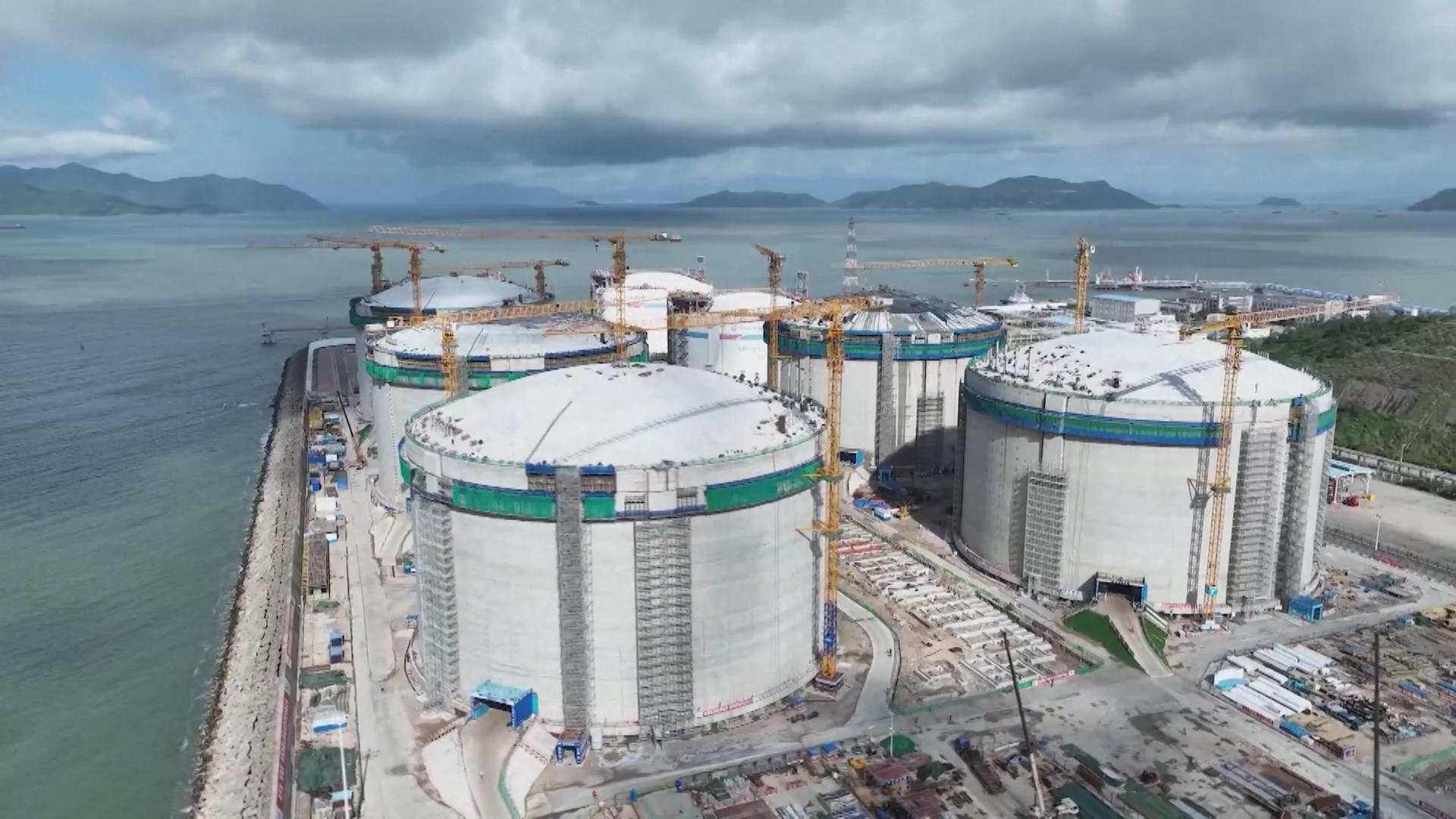
The super-sized LNG storage tanks in Zhuhai City, Guangdong Province, south China. /CMG
The super-sized LNG storage tanks in Zhuhai City, Guangdong Province, south China. /CMG
Five super-sized liquefied natural gas (LNG) storage tanks, the largest in the world, which can each hold 270,000 cubic meters, completed main project construction on Monday in south China's Guangdong Province.
Located in Zhuhai City, the base of the tanks named Jinwan "Green Energy Port" is the largest LNG terminal on the western bank of the Pearl River Estuary.
"The project adopts the world's largest LNG storage tank designs with homegrown core technologies. The height of a single storage tank is 65.7 meters, equivalent to the height of the 'Nest,' the National Stadium," said Shen Bairen, manager of the second phase of the project.
The Jinwan "Green Energy Port" project is one of the LNG storage tank projects with the most complex geological conditions and the most difficult seismic design in China.
"The project team overcame bottleneck technical problems in the design and construction of the storage tanks under complex geological conditions by using a digital intelligence platform, a smart construction site, full-automatic argon-arc welding and other efficient management and construction methods. We only spent 18 months to complete the main project construction," said Han Xiaokang, project manager of Engineering Procurement Construction.
The first phase of the base has been put into operation, offering continuous and stable clean energy for the Guangdong-Hong Kong-Macao Greater Bay Area since 2013.
As the second phase of the base, the five super-sized LNG storage tanks are expected to be put into use in 2024, when the base will become the largest natural gas storage and transportation base in South China, with an annual processing capacity reaching seven million tonnes, equivalent to about 10 billion cubic meters of gaseous natural gas. A total of 33.52 million tonnes of carbon dioxide can be reduced by then.